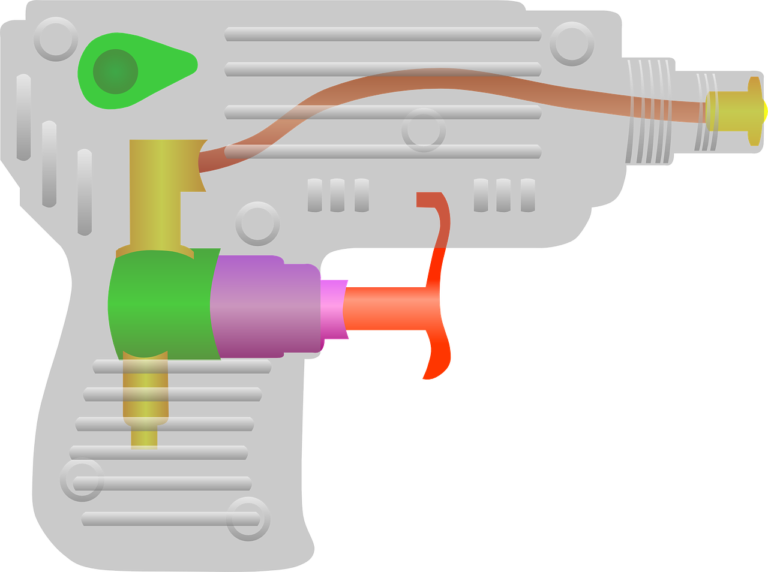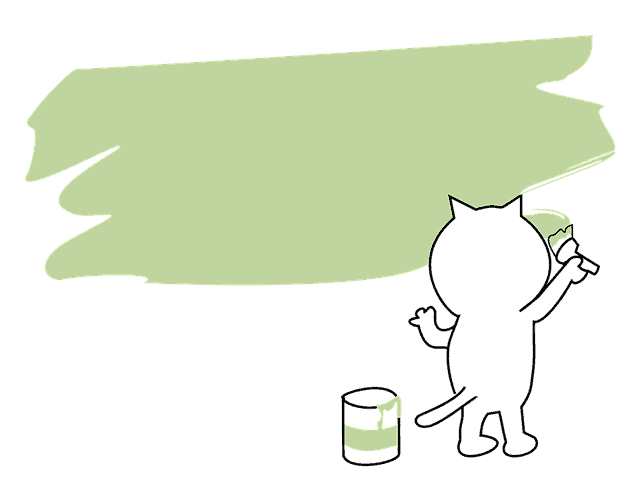How Do I Fix Peeling Paint on Ceiling
Paint peeling is a common problem that occurs on painted walls, ceiling, pavements, or furniture due to loss of stickiness strength over a while. Usually, peels damage the primary surface and destroy the aesthetic impression of a given surface. 
Well, the question at hand is, how do I fix peeling paint on the ceiling? Simple! You need to prepare the surface sufficiently (sanding), prime the polished ceiling, repaint, and let the final finish dry naturally without touching even your bathroom.
Also, purchase interior paint and primer that match the paint type you intend to apply on a particular ceiling (whether acrylic or latex paint/primer). Further, the sanding/polishing should be finely done to improve stickiness and eliminate drains during paint application.
Details: How Do I Fix Peeling Paint on Ceiling
Remember to put on protective gear (goggles, dustcoat, respirator, gloves, face mask, and safety boots) since human health is paramount and any form of health hazard should be under control. See Also: Ceiling Paint vs. Wall Paint.
a. Items Required
- Putty knife and filler
- Paint scraper and Wire brush
- Fine/rough Grain Sandpapers and Tack cloth
- Roller and Dropcloth, tarp, plastic piece, or rag
- Shop vacuum and Dust collection bag
- Paintbrush and Masking tape
- Flashlight tool and Paint tray
- Ladder and Protective gear
- Interior Primer and Interior Paint
- Respirator and thinner
- Paint sprayer
b. Ceiling Preparation – Sanding
This stage is crucial since it’s geared toward eliminating the peels and chips from the ceiling. Further, the ceiling preparation paves the way for a more comfortable way of prime application. Follow the steps below:
- Put on the protective gear – goggles, dustcoat, respirator, gloves, face mask, and safety boots
- Set the ladder in such a way you can access the ceiling without straining – consider a stand-alone type of ladder
- Lay tack cloth, plastic sheet, or polyethylene paper on the floor to prevent it from straining during the restoration
- Using the paint scraper, remove peels gently from the ceiling – you can use a wire brush for solid paint peels
- Using the putty knife and a filler, seal the holes, cracks, and opening on the ceiling and leave it to cure for 10 minutes
- Sand the ceiling gently with rough grain sandpaper and polish with fine-grain sandpaper to remove paint traces
- Blow/wipe of dust from the surface using a shop vacuum or a piece of cloth
The ceiling should be left dry – any wetness should be dried out (use a heat gun) before priming begins.
See Also: Paint Sprayer for Ceiling
c. Priming
The primer prepares the primary ceiling surface by sealing any holes or porous points on the primary material. In doing this, the paint’s stickiness ability is boosted while unnecessary drains/runs are reduced.
You can either use an oil-based primer or water-based primer according to the final paint you intend to paint your ceiling. Follow the steps below:
- Mark the ceiling points with masking tape – prevents prime overflow to adjacent surfaces when priming.
- Prepare your primer appropriately according to the manufacturer’s instructions.
- Soak the paintbrush or a roller in the primer sufficiently (don’t overload)
- Gently apply the primer on the ceiling back and fro – a roller is preferable as it leaves a better surface finish.
- Repeat the process until the entire ceiling is primed
NB: Avoid over excess prime application –apply sufficiently to cover primary ceiling material. Do not use a double primer layer.
d. Repainting the Ceiling
The repainting process should be carried out in a well-ventilated room. The paint choice (either oil-based or latex paint) should be matched with the primer used. Otherwise, the wrong combination will lead to peeling action with time.
Follow the steps below:
- Prepare the paint according to the manufacturer’s instructions
- Soak the roller or a paintbrush sufficiently in the paint (don’t overload)
- Gently, apply the paint on the ceiling – to and from
- Repeat the previous step until the entire ceiling is painted
- Use an angled paintbrush to paint ceiling corners or clear drains
NB: a ceiling paint sprayer guarantees you a better finish when used for ceiling painting.
e. Finish
Upon completion, leave the paint to dry for about one hour (follow manufactures advice). Remove all the masking tape gently – rapid removal causes paint chipping or damage finish.
Clean the paintbrush, roller, or paint sprayer with thinner or water according to the paint used and store it appropriately. Collect the peel debris in a dust collection bag and dispose of it appropriately.
Using a wet piece of cloth or thinner, wipe up any paint/primer sport that may have stained the floor – this is best done when the stain is still wet. Remove all equipment and leave the ceiling to cure naturally without touching.
See Also: Painting a Ceiling Without Roller Marks
What Causes House Ceiling Paint to Peel
Paint peeling doesn’t just occur naturally – it’s attributed to causes ranging from the nature of paint to primary surface preparation. Here are some of the major causes of peeling paint on the ceiling:
1. Low-Quality Paints
Low-quality paint has poor flexibility and weak adhesive properties. Such paint has low poor stickiness ability and doesn’t dry properly; thus, they end up peeling after a short period.
2. Moisture
Moisture weakens the paint stickiness ability with primary ceiling material. As the moisture penetrates the paint coating, the layers detach, bulge, and eventually peels off.
3. Exposed to High Temperatures
High temperatures weaken paint adhesive bonds that are in direct contact with ceiling surface material. Continued heating leads to cracking, chipping, and peeling off paint coating/layers.
4. Improper Surface Preparation
Improper surface preparation, like imperfect sanding process (rugged surface), creates room for bubble formation when painting. These bubbles break and lead to the peeling action of the paint layer.
Uncleaned dirt polish traces on the ceiling surface weakens the paint stickiness leading to peeling with time.
5. Incorrect paint application method
Using the wrong paint application method leads to low paint cohesion on the ceiling surface. The bubbles may be embedded with the paint layer, which may initiate chipping or peeling action with time.
Roller painting leaves unattended corners, which triggers peeling action.
See Also: Paint Roller to Hide Imperfections
6. Painting Dirty Ceiling Surface
The ceiling should be dirt-free before any painting takes place. The presence of dirt weakens paint stickiness strength, thus leading to peeling action.
7. Ceiling Surface Being in a Dry Environment
When the painted ceiling is exposed to arid conditions, the paint adhesive bonds weaken and start to chip and peel off.
8. Paint that is Incompatible with the Ceiling Primary Surface Material
The primary surface material of the ceiling determines the type of paint to use during application. Some paints are not compatible with the ceiling surface. Upon application, the paint layer chips or peels in a short period.
Some ceiling material may have chemicals that react with applied paint, thus weakening the paint stickiness on that particular surface.
9. Too Many Layers of Paint
Too many paint layers form a weak surface stickiness. They add self-weight on the ceiling and end up peeling off. Besides, the layers may stretch the first coating on the ceiling and hence breaks the surface contact.
10. Using Old paint
The old paint has a weak paint cohesive bond and low surface stickiness. The paint sticks gently and ends up chipping or peeling after a short period.
11. Different Kinds of Paints Used
Mixing different types of paints weakens the stickiness ability on the ceiling surface. Applying latex paint over acrylic paint will cause peeling off due to a weak paint adhesive bond on a given surface.
See Also: Shoes for Painters ed
Best Ways to Prevent Peeling of Ceiling Paint
By choosing to read this article on how to fix peeling paint on the ceiling, I believe that you’ve acquired ways to restore your peel challenges and gained extra information on causes and remedies for peeling paint on the ceiling. You can prevent the peeling of ceiling paint through the following ways:
- Selecting the right type of paint for interior ceiling
- Avoiding painting too many paint layers on the ceiling
- Not using old paint for ceiling painting
- Selecting a primer that is compatible with the finish paint
- Sticking to one particular type of paint during paint reinforcement
- Dusting the surface perfectly before paint application
- Keeping ceiling free from the humid condition – keep it dry always
- Carrying out proper surface preparation and debris removal
- Protecting the painted ceiling from exposure to corrosive substances
- Eliminating moisture from the painted ceiling
- Avoiding very high temperatures in the room
- Choosing a paint that’s compatible with the primary material of the ceiling
- Using the correct paint application method
- Using high-quality interior paint
- Allowing suitable time between coats when painting the ceiling
NB: Preventive measures are vital in improving the service life of particular ceiling paint and maintaining an attractive initial coat all through without unnecessary peeling occurrence.
See Also: Deck Stain for Pressure Treated Wood
Precautions to Consider When Fixing Peeling Ceiling Paint
Human health and environmental safety are paramount when fixing your peeling paint on the ceiling. You are therefore required to adhere to the following precautions.
- Never repaint peeling paint ceiling without surface preparation – the stickiness will be low, thus leading to further peeling.
- Always wear protective gear (goggles, dustcoat, respirator, gloves, face mask, and safety boots) when fixing peeling paint on the ceiling.
- Never smell paints or primer directly – the solvents contain additives that may irritate the nasal cavity or respiratory system.
- Carry out a drop test experiment for prepared primer or paint to ascertain its effectiveness on the ceiling upon application.
- The ceiling surface preparation process should be done gently to prevent primary ceiling material from damage.
- Consider a stand-alone ladder-type when fixing your peeling paint on the ceiling to prevent the sliding prone accident.
- Always follow the manufacturer’s instructions when preparing a primer or paint for ceiling paint.
- All paint debris and peels should be cleaned from the floor after ceiling paint restoration is done.
- Store primer and paint in a cool, dry place away from kids and pets.
- If you get into contact with paint or primer, clean the area with soap and clean water.
- Never paint wet ceiling or use acrylic paint on fireplace ceiling.
Conclusion
Always remember that when fixing the paint peel, you will need to prepare the ceiling by sanding/polishing, prime the surface with interior primer before repainting with interior-based paint. You can use either acrylic or latex paint according to the nature of the ceiling under paint restoration.
Notably, adhere to the manufacturer’s instructions during primer and paint preparation to attain an excellent surface finish. Always wear protective gears when painting for your safety.





